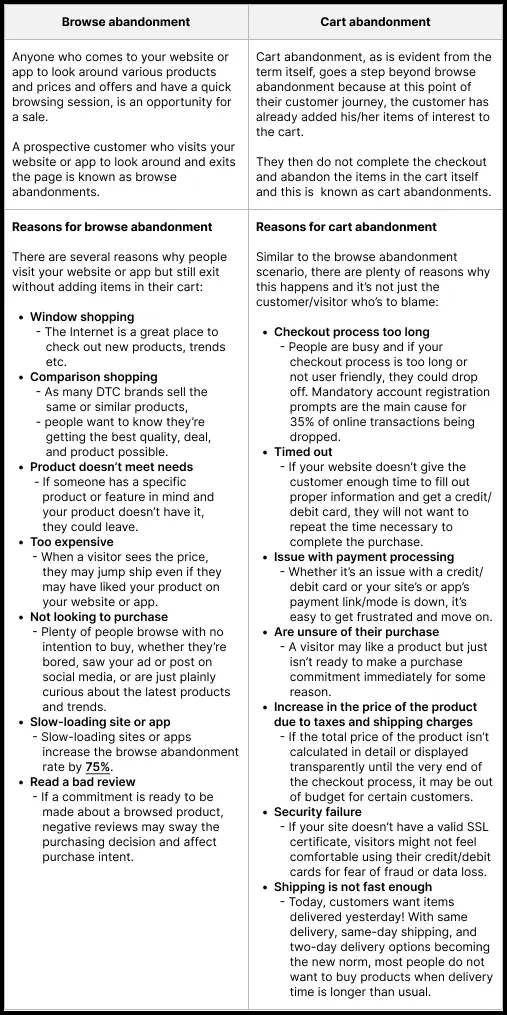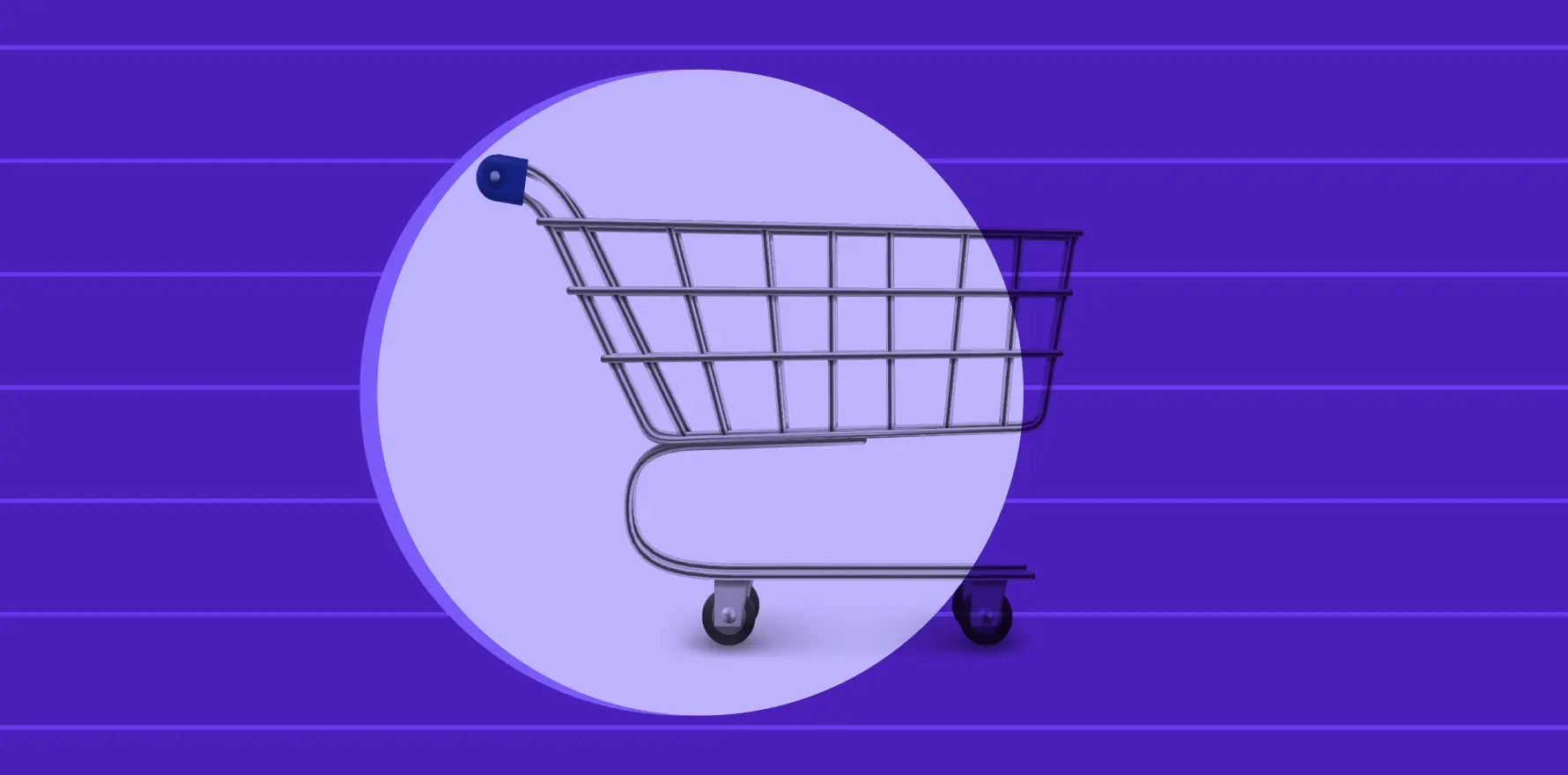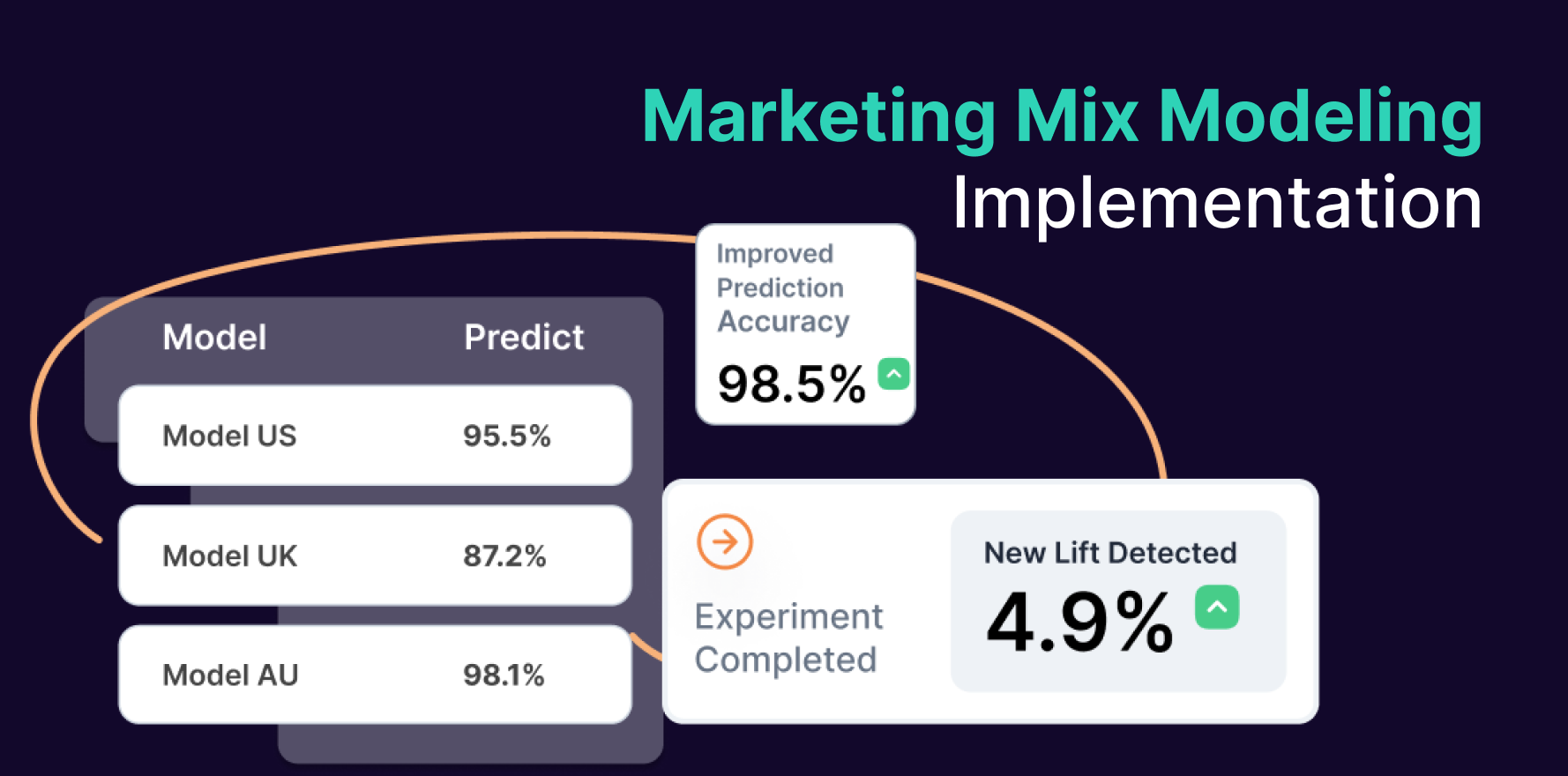Customers may leave your DTC brand’s website or app due to a variety of reasons. This may lead to them abandoning browsing sessions or items in their cart, which can hurt your sales but there are effective methods to recover such lost opportunities while delivering a positive experience.
From browse abandonment messages for online window shoppers to cart abandonment emails for potential customers with numerous items in their cart, we’ve got you covered.
But first let’s delve deeper into what is browse abandonment and cart abandonment.
browse-abandonment-vs-cart-abandonment 
53% of online shoppersalways do research before they buy a product.
Only10% of visitors to ecommerce websitesactually add a product to their cart.
The rest, 90% of your website visitors, can rightly be considered as “browse abandoners”.
How to counter browse abandonment?
Browse abandonment rate might not be the most common metric in ecommerce, but with the right action behind it, it can be immensely powerful in raising your lost revenue.
As soon as you know the abandonment rate on a particular product page, you can find out what’s wrong with it in order to fix it and boost sales.
If you can track and tag individual customers (who abandon their visit to your site after seeing a product page) via your CDP, you can follow up with them through more targeted, nuanced browse abandonment messaging (emails, SMSes, and chat messages, etc).
If you’re using a CDP like Lifesight Connect, setting up a browse abandonment segment among your customers is relatively simple.
With the CDP connected to your website and app, you can create various browse abandonment segments, including anything from first-time shoppers to loyal customers who have viewed a specific product page multiple times before making a purchase.
Now, a simple browse abandonment flow can be created to persuade a specific user segment back to complete a purchase. For instance, your messaging sequence can be on the lines of:
- Just highlighting the product without saying that the user has looked at it. Merely mentioning it might be enough to make someone buy
- Understanding the visitor’s needs and anticipating what queries they could have allows you to provide the information they seek
- Providing a specific incentive, such as a small discount coupon, to complete the purchase
- Highlighting other, related products that match well with your user’s interest based on their browse history
- Creating a sense of urgency by letting browsers know that the product they were looking at is going fast
Finally, as with any messaging flow, it’s important to space out these emails/SMSes correctly and make sure that they match your overall strategy and messaging.
Why should you be worried about cart abandonment rates?
On an average,69.57%is the documented online abandoned cart rate, which is a calculation based on 41 various studies on eCommerce shopping cart abandonment from Baymard Institute.
This roughly equates to$260 billionin ecommerce sales lost from people in the US and EU who didn’t complete the purchasing process!
With proper actions taken at the right time and the right messaging sent to those customers who abandoned carts, your DTC brand can recover a lot of this lost revenue.
Once you’re aware of your website or app visitor’s obstacles for not completing the purchase, you need to look at your website, app, product, pricing strategies, shipping charges, and product & marketing messaging and take the right actions to re-engage and incentivize them to buy.
Platforms like Lifesight should be utilized to remind customers of their forgotten purchases or abandoned products in the cart and give that necessary gentle nudge. This can be accomplished via sending the right messages at the right time through emails, SMSes, and chats.
How to reduce cart abandonment?
As with browse abandonment, focusing at least part of your ROI and email/SMS marketing strategy on abandoned carts comes with two core advantages:
- A clear understanding and frequent tracking of the metric helps you to spot potential issues and continue improving your purchasing flow. For example, you might notice that a simplified checkout process significantly improves your abandoned cart rate.
- Understanding which users leave their carts helps you build an audience segment of visitors who are at least interested enough in your products to have gotten this far. As a result, you can build more relevant email and SMS messaging flows that drive the purchase completion.
Here, again, the benefit of a CDP like Lifesight Measure comes handy.
You can easily build a customer segment of cart abandoners, which you can then target with email and SMS messaging flows specifically designed to help them in that final step. Here are a few messaging strategies that maybe used either in sequence or in a blended way depending on your product, your brand voice, and marketing strategy:
- Present a simple reminder that the shopper has something left in their cart – after all, they might have intended to come back later all along.
- If someone is unwilling to pay taxes or delivery, offer a discount in exchange for completing the purchase.
- For customers that have more than one item remaining in their shopping cart, consider offering free shipping.
- Include social proof, such as ratings and customer reviews, that help to convince the shopper they are making the right choice.
When building a cart abandonment messaging flow, it helps to build on these messages proactively.
For example, the first outreach might be a simple reminder and/or include social proof, followed by a discount coupon only for those who don’t respond to the first email.
Free shipping might be the final push to see if persistent cart abandoners still have a chance to convert.
Leverage data to reduce browse and cart abandonment
Both individually and when done together, browse and cart abandonment strategies can go a long way towards optimizing your email and SMS marketing strategies towards revenue.
When implemented and automated, they’re a great opportunity to offer your users and customers a second, a third, and a fourth opportunity to convert, instead of giving up on them immediately.
Fortunately, you’re not on your own.Get early accessto our platform.
You may also like
Essential resources for your success

























































